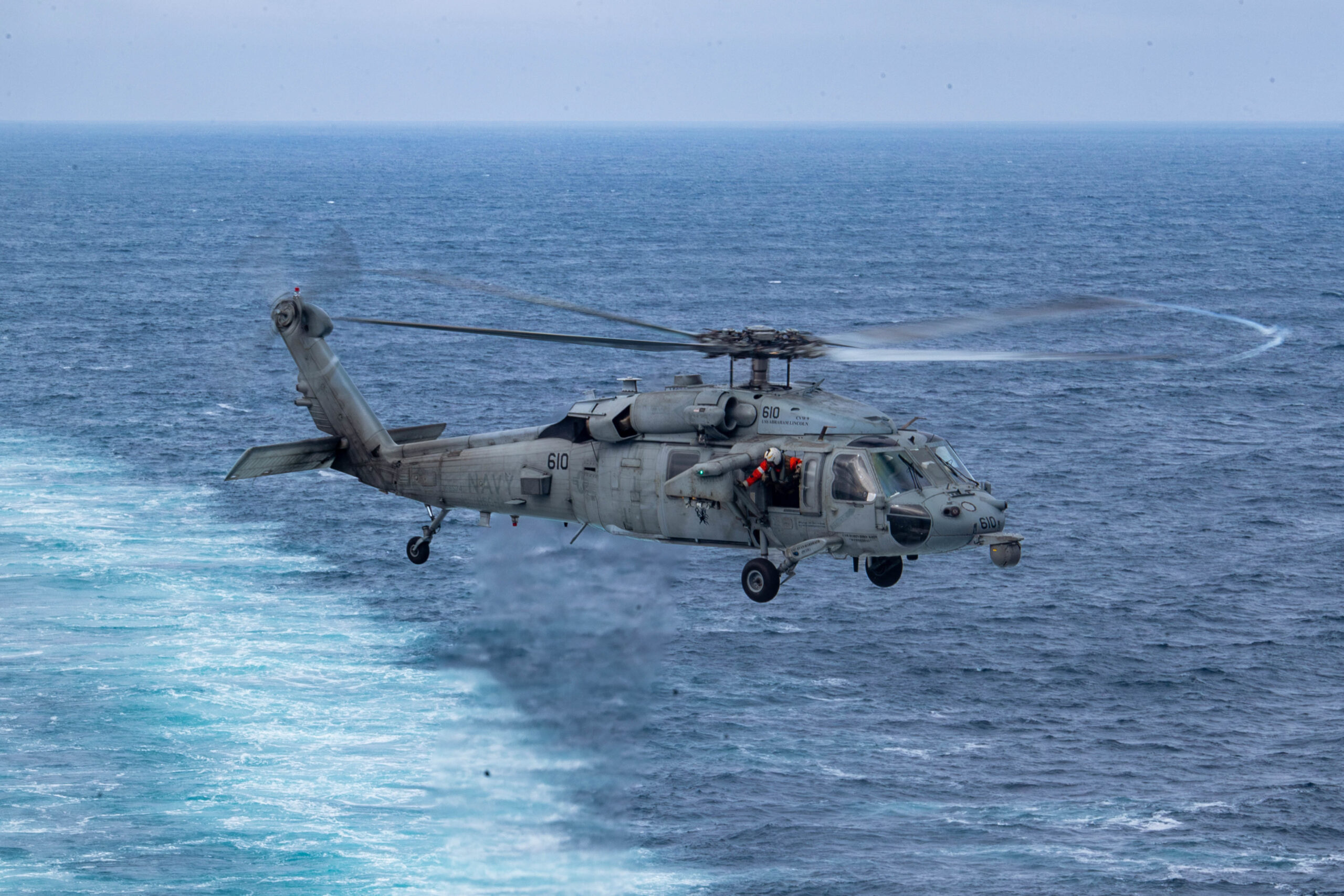The United States Navy faced a dramatic series of events this past Sunday when both a helicopter and a fighter jet crashed in the South China Sea during routine operations. Thankfully, all service members involved survived and are now reported to be in stable condition.
These incidents occurred within less than an hour of each other, highlighting both the inherent risks of military operations and the effectiveness of the Navy’s emergency response protocols. According to a statement from the U.S. Pacific Fleet, “All personnel involved are safe and in stable condition.” This immediate reassurance is significant, especially considering the complexities and dangers present when operating advanced aircraft in a strategic region such as the South China Sea.
The safety of the crew was achieved thanks to the professionalism and preparedness of both the aircrews and the support teams stationed aboard the aircraft carrier USS Nimitz.
—
### The First Incident: MH-60R Sea Hawk Helicopter Crash
The first of the two incidents took place at approximately 2:45 p.m. local time. During routine operations, an MH-60R Sea Hawk helicopter assigned to the Nimitz experienced a mishap and went down in the waters of the South China Sea.
The helicopter belonged to the “Battle Cats” of Helicopter Maritime Strike Squadron 73, a unit known for its vital role in maritime security and anti-submarine warfare. Because the carrier’s strike group was well prepared and responded swiftly, all three crew members aboard the helicopter were rescued without further incident.
—
### The Second Incident: F/A-18F Super Hornet Fighter Jet Crash
Just half an hour later, at about 3:15 p.m., a second incident unfolded when an F/A-18F Super Hornet fighter jet, part of Strike Fighter Squadron 22—also known as the “Fighting Redcocks”—crashed in the same general area. Like the earlier helicopter incident, this crash occurred during routine flight operations.
Both crew members on board the Super Hornet managed to safely eject from the jet and were quickly rescued by personnel assigned to the carrier’s strike group. The efficient recovery once again underscored the Navy’s strong emphasis on training and safety procedures.
—
### The Challenges of Routine Military Operations
Routine operations often involve complex maneuvers, coordination among multiple assets, and changing environmental conditions. At the same time, the fact that all individuals involved were brought to safety reflects the U.S. Navy’s commitment to its personnel and to operational readiness.
As the Navy moves forward, investigations into both incidents have already begun. The U.S. Pacific Fleet stated, “The cause of both incidents are under investigation.” Given the Navy’s thorough approach, the investigations will likely cover mechanical, environmental, and human factors to determine what went wrong and how similar incidents can be prevented in the future.
—
### Context and Strategic Importance
Some observers may raise concerns about the proximity of these events, and it is understandable that the public would want answers. However, it is worth noting that incidents like these, while rare, do occur in the context of high-tempo training and operations.
The U.S. military operates around the clock, often in challenging international environments, to maintain peace and stability. Therefore, preparedness and rapid response are absolutely critical.
Additionally, the region where these accidents took place—the South China Sea—remains an area of considerable strategic interest to the United States and its allies. Due to ongoing territorial disputes and increased activity by other regional powers, the presence of the U.S. Navy serves as a stabilizing factor and helps safeguard freedom of navigation.
—
### A Testament to Professionalism and Dedication
The Navy’s ability to recover from accidents and continue its mission speaks to the professionalism of the men and women who serve. It is also important for Americans to support the service members who put themselves at risk every day.
While it is natural to focus on the technical causes of accidents, one should not lose sight of the courage and dedication demonstrated by these crews. The successful rescue efforts in both incidents are a testament to the skill and training of our military, as well as the leadership of those commanding operations at sea.
As the investigations continue, more information will become available regarding what caused the crashes and what measures will be taken to address any issues. For now, the most important takeaway is that all personnel are safe and that the U.S. Navy remains vigilant in its mission.
https://www.lifezette.com/2025/10/us-navy-helicopter-and-jet-crash-in-south-china-sea-crews-rescued-investigations-underway/
